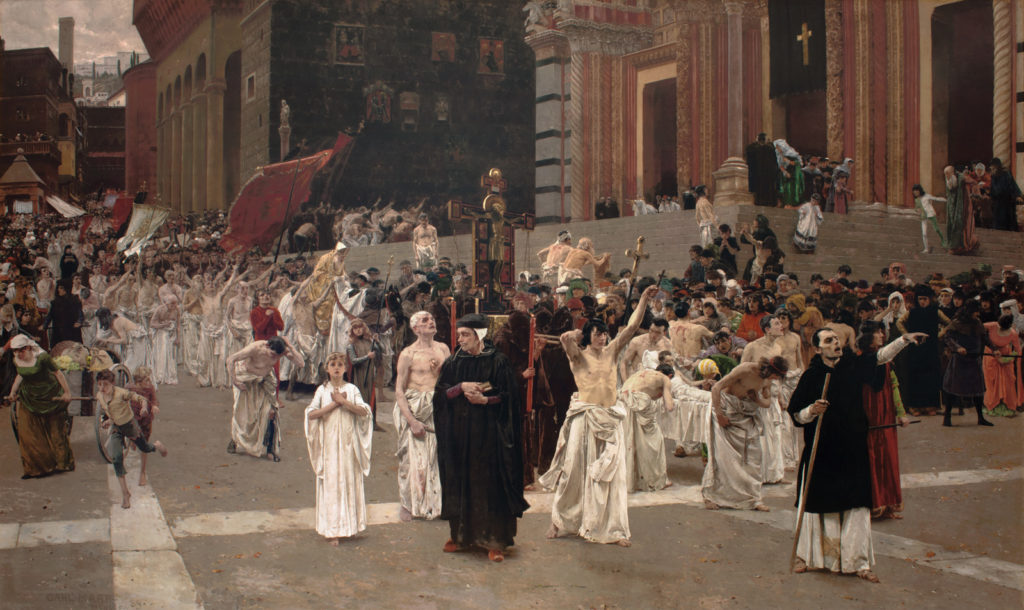What is it?
Artist
Carl von Marr (Milwaukee 1858–1936 Munich)
Title
Flagellants
Year
1885–89
Medium
Oil on canvas
Dimensions
167 x 273 in.
Credit line
Lent permanently 1976, City of Milwaukee
About the Work
About
Carl von Marr was not the most famous artist whose work was on view at the 1893 World’s Columbian Exposition (commonly known as the Chicago World’s Fair), but his painting the Flagellants quickly became one of the most popular with visitors. Von Marr took four years to complete the painting, determined that it would establish his reputation as an artist. Although by the late 1880s, large-scale history paintings were becoming a rarity, he did not waver in his conviction that his would be a “once seen, never forgotten” painting.
The painting depicts a procession of flagellants walking past the Siena cathedral. Despite the grim subject, the composition is rather stately, with the participants almost in parade form as they make their way along the street. The palette is restricted, with a strong emphasis on black and white, yet rich and even warm in the architecture that frames the scene. The bubonic plague, or Black Death, that swept through continental Europe in the fourteenth century, decimated Siena in the summer of 1348; an estimated 50–60 percent of residents died. Medical ignorance, cramped, dirty living conditions, and expansions in trade routes all exacerbated the effects and spread of the pandemic. The terrified populace decried the existence of God as well as the church’s ability to intercede against the scourge.
Groups of flagellants emerged, claiming to offer a means of salvation. Banding together for thirty-three days to symbolize the thirty-three years of Christ’s life on earth, they roamed from city to city enacting violent performances several times a day that drew huge crowds. The groups also promoted the notion that Jews were responsible for the plague, which encouraged vicious pogroms throughout Europe. The anti-Semitic beliefs heightened the fear and hysteria—and likely even spread the disease; most cities and towns eventually barred the flagellants.
The trauma of the plague played out in people’s psyches for years after it had run its course. Giovanni Boccaccio’s Decameron (1353) graphically details the nightmarish conditions in Florence in stories told by women and men who fled to the countryside. Italian representations of the “Dance of Death,” St. Sebastian, and the Madonna della Misericordia (Madonna of Mercy) proliferated, the first as a cautionary reminder, the latter two invoking the help of intercessors against the contagion.

